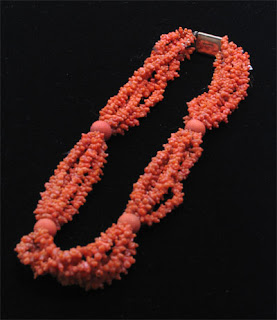
 London is a great city to go for afternoon tea in, a few of my favourites are Maison Bertaux in Soho, Treacle on the Columbia Road, Hummingbird Bakery in Notting Hill and the now closed down Shipp's Tearoom at Borough Market. I was very saddened to hear about the closure of Shipp's Tearoom (see picture) I enjoyed delicious clotted cream, jam and scones there washed down with refreshing peppermint tea. All the crockery was mis-matched with different cups and saucers and lovely cake stands. It got me thinking about all the amazing tea sets there are in Alfies, which made me want to recreate the whole experience at home!
London is a great city to go for afternoon tea in, a few of my favourites are Maison Bertaux in Soho, Treacle on the Columbia Road, Hummingbird Bakery in Notting Hill and the now closed down Shipp's Tearoom at Borough Market. I was very saddened to hear about the closure of Shipp's Tearoom (see picture) I enjoyed delicious clotted cream, jam and scones there washed down with refreshing peppermint tea. All the crockery was mis-matched with different cups and saucers and lovely cake stands. It got me thinking about all the amazing tea sets there are in Alfies, which made me want to recreate the whole experience at home!Here are a selection of my favourites from a range of different dealers in the market, some are full sets and others are single tea cups and saucers.
These are great cups from Geoffrey Robinson designed by A. H. Woodfull.

'Woody' Woodfull is one of the few designers of plastics products who we know by name. He spent over forty years at British Industrial Plastics (B.I.P) Streetly Factory designing and developing a vast range of products and laying down many of the ground rules of professional industrial design.
Woody and his design unit were responsible for most of the designs of melamine tableware so familiar to the 60's generation. Woody had visited the USA in 1948 and seen early examples of domestic melamine tableware. BIP worked to develop tableware sets to compete with ceramics. Woody's team were involved from the mid 50's onwards with the development of the Midwinter Modern range of melamine tableware.
This beautiful teapot comes from Beth Adams, it is made by Crown Ducal,1933 and the pattern is called Orange Tree. The print is so delicate it would be a pleasure having a cup of tea from it!
Pictured below is an Alfred Meakin 'ceylon tea' Tennis set. This is my favourite, what a treat to have a cup of tea and a delicious piece of cake on this lovely set, theres no room for sharing!
Dealer Wesley Payne on the ground floor has got a vast collection of beautiful china, including the picture above. Wesley specialises in collectable ceramics form the early 20th Century. Below is another great example.

Carlton Ware Teapot, milk jug and sugar bowl
Below are a selection of individual cups and saucers from Beth and Beverly Adams, all of them very eye catching unique pieces!



Shelly Butterfly Wing Mode Royal Doultan 'Lynn' pattern Shelley Blue Geometric mode
c.1930, Trio c.1933-35 shape c.1930
Lastly I couldn't resist these fantastic 1950's Mickey and Minnie Mouse cups and saucers from Ian Broughton. They bring out the child in me! This is part of a full set and would add a bit of kitsch to your tea party!

















